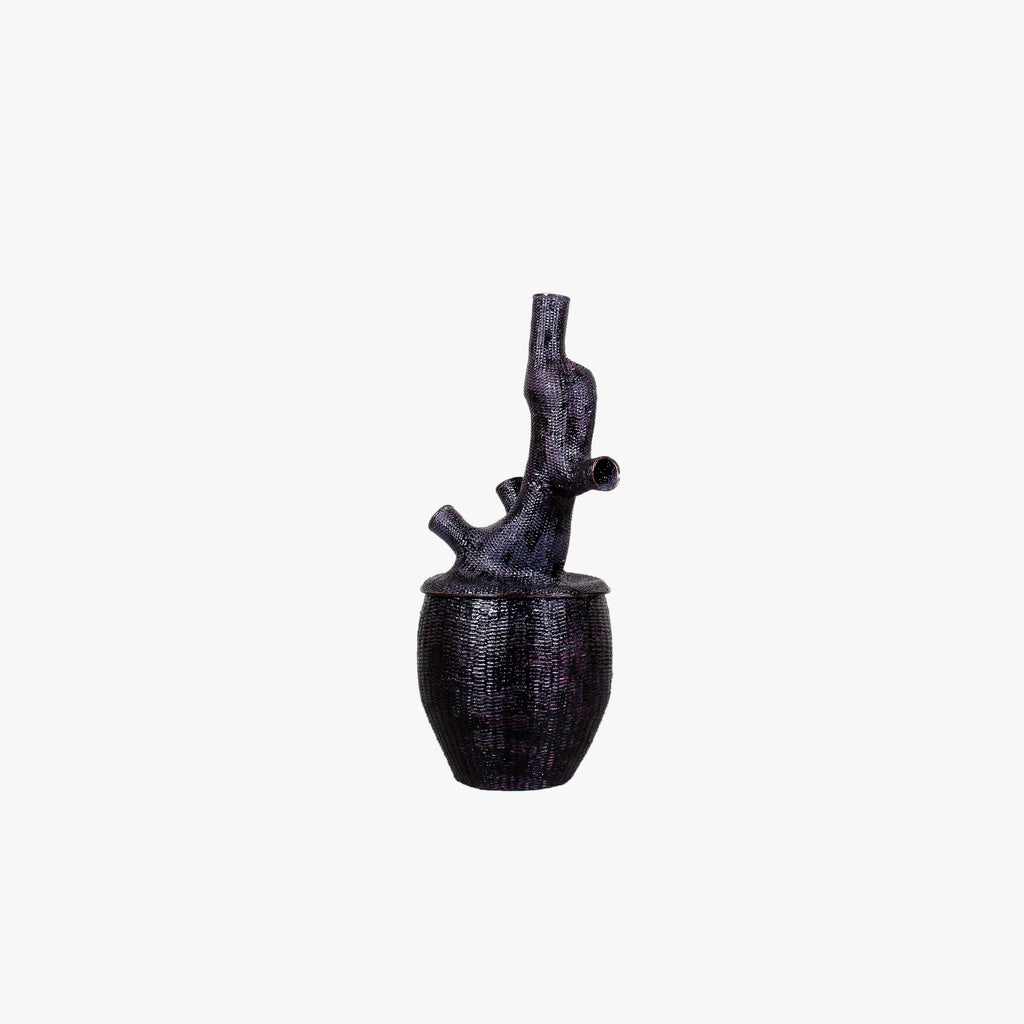
◄ Overview
Erez Nevi Pana
Wasted (II)
Nearly every designer working today is well aware of impending climate change. Very few are responding in a way commensurate with the scale of the crisis. For Erez Nevi Pana, the most important question for designers today (perhaps the only truly important question) is how to produce objects that are truly sustainable, a principle that has guided all his efforts. This basket exemplifies his approach: Nevi Pana used his own personal trash as an armature for the construction of bamboo baskets. The dark “glaze” is also a waste material, sourced from the Indian cashew nut processing industry.
Tearsheet
Artist
Erez Nevi Pana
Material
Bamboo, cashew
Contributing Gallery
Friedman Benda
Date
2017
Dimensions
42 in × 20 in × 17 in
106.68 cm × 50.8 cm × 43.18 cm
ID
Image credit: Courtesy of Friedman Benda and Erez Nevi Pana, photography by Daniel Kukla



Wasted (II), 2017
42 in × 20 in × 17 in
Bamboo, cashew
Friedman Benda
$0
Nearly every designer working today is well aware of impending climate change. Very few are responding in a way commensurate with the scale of the crisis. For Erez Nevi Pana, the most important question for designers today (perhaps the only truly important question) is how to produce objects that are truly sustainable, a principle that has guided all his efforts. This basket exemplifies his approach: Nevi Pana used his own personal trash as an armature for the construction of bamboo baskets. The dark “glaze” is also a waste material, sourced from the Indian cashew nut processing industry.



